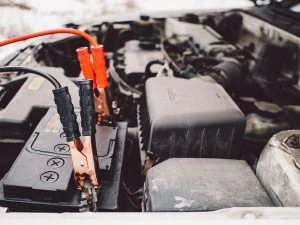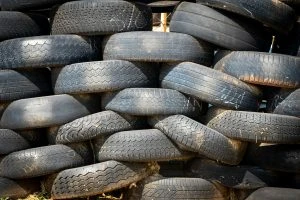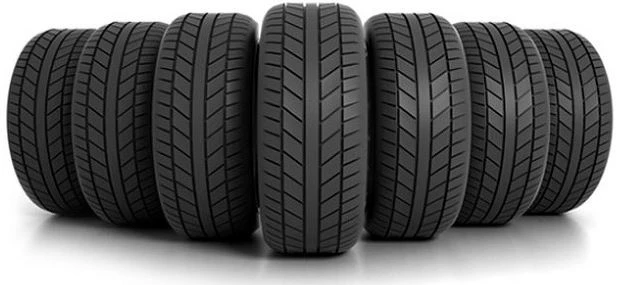Car Maintenance
ICE Batteries And EV Batteries

Anybody who’s left the lights on in their car overnight or helped a mate push-start a sulky ICE vehicle knows only too well that all cars have batteries, not just EVs. So you might be wondering about what the big deal about battery life and battery fires and battery range is all about. To understand this, it’s time to go back to basics and to look at what a battery is and how it works.
Your bog-standard battery in an ICE vehicle is a lead–acid battery – the lead is why it’s so heavy, and the acid is why the batteries are “interesting” to dispose of, as the acid in question is often H2SO4 or sulphuric acid. Car batteries were a very welcome replacement to the old-fashioned method of getting the motor started with a crank handle. These lead–acid batteries are rechargeable, as the petrol or diesel motor handily charges them back up. This is why you can drive for hours and hours with the headlights on at night without the battery going flat, but if you leave lights on overnight, it will go flat.
In a lead–acid battery, both the anode (the bit that produces the positive charge) and the cathode (the bit that produces a negative charge) are made from lead and lead dioxide, respectively. The electrolyte (the bit that gets the electrons flowing thanks to chemical reactions) is sulphuric acid. Hook this up to a circuit and the electrons whizz around it in an attempt to get into balance, creating electrical current that we can use to, say, create a controlled explosion to power a vehicle. Most batteries also contain separators that stop the anodes and cathodes touching each other, which can happen if dendrites (branching crystals) start to form. If you want to get really technical, a battery is made up of a lot of individual cells containing an anode, a cathode and the electrolyte. In fact, that’s why a battery is called a battery – it reminded the early inventors of an array of cannons or other weapons ready to fire. The batteries can last for years, especially if turned over regularly and cared for properly (and that’s another subject for another day).
The basic design of a lithium-ion battery (LIB) inside an EV is similar. It’s got an anode, a cathode, an electrolyte and a separator. In this case, the cathode is made from more exotic metals and oxides, such as lithium cobalt oxide, lithium nickel cobalt manganese oxide and lithium nickel cobalt aluminium oxide (try saying that quickly!), and their conductivity is improved by mixing them with conductive black carbon. The anode is usually made of graphite. The electrolyte has more lithium, specifically lithium salts dissolved in organic solvents that have plenty of the lithium ions that give the batteries their name. These batteries are a lot lighter than lead–acid batteries and can deliver a lot of punch. They also have a longer lifespan than other types of rechargeable battery, such as ni–cad (nickel–cadmium) batteries and don’t have the problem of “memory”.
The problem with lithium batteries is that the electrolyte is very, very flammable. The lithium is also prone to growing dendrites, which can cause short-circuits (and thus fires), especially if it’s charged too fast, overcharged or charged at too low a temperature. Lithium also gets prone to throwing a dramatic wobbly if it gets too hot or if the battery is damaged. It’s a case of the lithium’s strengths – its unstable chemistry that allows it to generate a charge – being its greatest weakness.
Lithium-ion batteries haven’t been around for as long as lead–acid batteries, as they only came on the scene in the 1960s and were popularised by Sony in the late 1980s. The lead–acid battery, however, has been around since the 1880s. In other words, it’s early days for lithium-ion batteries, and they’re working hard to improve the batteries and make them better.
But what happens when the batteries come to the end of their lives, which is inevitable? This is more of an issue with lithium batteries, as lithium is a much rarer metal, whereas lead is pretty common and humans have been playing around with it for millennia, although it’s now not used as much in common products (except for batteries) because of the health hazards.
The good news is that both types of battery can be recycled. It is possible for both metals – lead and lithium – to be cleaned up and used in new batteries. In fact, if you have an old battery of either type, then the best thing to do is to take it down to your nearest recycling centre and get it dealt with. Otherwise, both types can be a bit nasty, although the nastiness of lithium is more dramatic (fires) than that of lead (slow poisoning). Most lead in the batteries can be recycled; once again, the rate of recycling of lithium is a bit behind, most because it’s still a young technology. The acid inside a lead–acid battery can easily be neutralized or put to other uses, including making fertilizer.
When Should I Disconnect My Car Battery?
There are various instances where you might need to disconnect your car battery, including performing maintenance, replacing the battery, resetting the car’s computer, or storing the vehicle for an extended period. However, not every motorist knows how to perform this rather simple task.
Let’s take a look at how to disconnect your car battery in a safe and practical manner.
When Might You Disconnect a Car Battery?
One common reason to disconnect your car battery is during maintenance or repair work. If you are working on any part of the car that involves the electrical system, such as changing out fuses, installing new electrical components, or even doing work under the bonnet near the battery, it’s vital to disconnect the battery first.
This precaution prevents accidental short circuits or electric shocks. Another scenario is when you are replacing the battery itself. Before removing the old battery, you must disconnect it to avoid sparks or damage to the car’s electrical system. Furthermore, disconnecting the battery can reset the car’s onboard computer, which might be necessary if you are experiencing persistent electronic issues or error codes.
Finally, if you plan to store your vehicle for a long period, disconnecting the battery can prevent it from discharging completely, which can save you from needing a jump-start or replacement batter later on.

How to Disconnect Your Car Battery
To disconnect a car battery, start by gathering the necessary tools: a spanner or pliers to loosen the battery terminals, and safety gear like gloves and glasses.
Before you begin, ensure the car is turned off and the keys are removed from the ignition. This step is crucial to prevent any accidental electrical discharge.
Locate the battery, which may be found under the bonnet in the engine compartment, or in some vehicles, it might be in the boot or even under a seat. Identify the positive and negative terminals – the negative terminal is usually marked with a minus (-) sign, and the positive with a plus (+) sign.
Begin with the negative terminal. This is a safety measure to reduce the risk of short circuits. Using the spanner, loosen the nut on the negative terminal clamp. Once loose, carefully lift the clamp away from the terminal. Be sure to tuck it aside where it cannot accidentally come back into contact with the terminal.
After the negative terminal is disconnected, repeat the process with the positive terminal. Loosen the nut and lift the clamp away. It’s important to note that while working, avoid touching the spanner to any other metal parts of the car, as this could create a dangerous short circuit.
Once both terminals are disconnected, you can proceed with whatever maintenance or repair tasks are necessary. If you are replacing the battery, remove it carefully, taking note of its orientation to ensure the new battery is installed correctly. To reconnect the battery, reverse the process: attach the positive terminal first, followed by the negative terminal. Ensure the clamps are securely fastened to prevent any loose connections, which can lead to electrical issues or difficulties starting the car.
Whether for maintenance, repairs, or long-term storage, disconnecting your car’s battery is all about safety and preventing potential damage to your vehicle’s electrical system. Always follow the correct procedures and safety precautions to maintain the integrity of your car and avoid any mishaps.
Is That Second-Hand Car Reliable?
So you’re in the market for a new vehicle, but don’t want to dish out top dollar. You turn to the second-hand market, wondering if you can score yourself a bargain. What should you be on the lookout for? Is there any way to determine how reliable a used car is?
Due Diligence
The best place to start is with research. Look into which makes and models are known for their reliability. Consider your social circle, who drives what, and if they’ve encountered any problems. Jump on message boards and look for opinions from owners. Read motoring reviews, which should offer insights into common issues and the overall satisfaction of other owners.
Once you’re out and about visiting car yards or private sellers, begin to compare the options you narrow down to. When it comes to reliability, the first thing you want to do is check the history of the cars you are looking at, so turn to vehicle history reports, service records, and check the relevant register in your state or territory to ensure the car hasn’t been written off in the past.
Inspecting the Vehicle
Begin with a walk-around to look for signs of damage, rust, or mismatched paint that might indicate previous repairs. Check the condition of the tyres to ensure they have sufficient tread depth and that there are no signs of uneven wear, which could signal alignment issues or suspension problems. While you’re at it, make sure you also inspect the lights, windows, and mirrors to ensure they are functional and free from cracks or any other damage.
Lift the bonnet and examine the engine bay for any signs of leaks, corrosion, or worn belts and hoses. The oil, coolant, and transmission fluid should be at appropriate levels and appear clean. Dirty or low fluids should prove cause for concern, as it may signal a neglectful owner.

There is only so much that an untrained individual can look for when inspecting under the bonnet, so ask a trusted mechanic or third-party inspection service to perform a more detailed inspection. These individuals may be able to identify potential issues that might not be apparent during your inspection and test drive.
Inside the vehicle, make sure that key features like air conditioning, heating, infotainment system, power windows and so forth are all in working order. If you fail to pick up any problems at this stage, it could lead to complications later on, and a big bill.
Driving the Vehicle
Arguably the most telling aspect of evaluating a second-hand car is the test drive. Pay attention to how the car starts, accelerates, and handles. The engine should start easily and run smoothly without unusual noises. Check the brakes for responsiveness and listen for any squeaking or grinding sounds, which can indicate worn brake pads or rotors. Test the steering for smoothness and ensure there are no vibrations or pulling to one side.
Is it the Right Car for You?
While you can never be certain that you’re not acquiring a lemon, you can form some idea as to the likely reliability of a second-hand vehicle by completing diligent research, inspecting the vehicle, and driving the car as part of a test drive.
It’s wise to follow these steps to ensure that you make an informed decision, reducing the risk of purchasing a used car that turns out to be a lemon.
Get More Life Out Of Your Tyres

We’re all facing rising costs for this, that and the other thing, and tyres aren’t cheap. I think that the car wears more expensive “shoes” than I do. You should never, ever skimp on tyres and get about on rubber with a barely legal tread depth. However, nobody wants to spend more than they have to, so how can you extend the life of your tyres so you get the most out of them and they last as long as possible?
Rotate your tyres regularly. This means every 10,000–13,000 or thereabouts. How do you rotate your tyres? This depends on your drivetrain, and whether or not you use directional tyres (i.e., left-hand and right-hand tyres). The instructions sound like dance steps but they’re a lot easier. If you get easily muddled, then mark your tyres with chalk before you start (e.g., FL for front left, etc.).
- For a front wheel drive vehicle, the front tyres go to the back on the same side. Then the back tyres go to the front and the opposite side (i.e., they swap diagonally).
- For a rear wheel drive vehicle, the rear tyres go to the front on the same side. Then the front tyres go to the back on the opposite side (i.e., a diagonal swap).
- For a 4×4, front left swaps places with rear right, and front right swaps with rear left (everything swaps diagonally)
- With directional tyres, the left-hand tyres swap places with each other. The same happens on the right.
Get your wheels aligned if you notice problems. The problem usually shows up in two main ways. The first is if you spot irregular wear on your tyres. You’ll only spot this if you check your tyres regularly, which is something we should all do. The other way that poor alignment shows up is if your car pulls to one side. To test this, find a nice straight bit of road that’s fairly empty, position yourself in the middle of your lane and let go of the steering wheel (you may want to disable any driver aids such as lane keeping assistance). If your car pulls to one side, rather like my dog catching a sniff of a dropped fast food wrapper on the side of the road, then your alignment is out of whack and needs tweaking.
Use the right tyre pressure. The right pressure will depend on the individual tyre, your type of vehicle, whether or not you’re towing and even the temperature. Get to know what your car needs – you’ll probably find this in the driver’s handbook that came with your car, probably in the glovebox – and check it on a regular basis. Maybe not every time you stop to top up, but more often than you get the oil changed.
Don’t drive aggressively. OK, when you were in your late teens or early twenties, it might have seemed super cool to rev off and screech to a halt in a way that left black marks on the road, but you know what those black marks are made of, don’t you? That’s bits of your tyres left on the surface of the road, meaning that your tyre won’t have lasted as long as it would have. Enjoy your driving by all means, but grow up a bit and don’t be so forceful in how you start and stop. It’s easier on your car as a whole and also helps with your fuel bill (something we can all do a bit more of these days).
If stuck, don’t keep spinning. We’ve all been there now and again, especially if you like a bit of off-road driving. You get a wheel into somewhere it loses traction and it starts spinning. If you’re like most people, you’ll put your foot down and spin it some more just in case it grabs and moves this time. Unfortunately, slipping is slipping, and the only things you’ll do are (a) wear your tyres down a bit more than you would have and (b) dig yourself in deeper. Instead, get out, have a look at how you’re stuck and see what you can do.
If your car is parked up for a long time, or if you have a set of tyres in storage, keep them at the right temperature (i.e., not too hot) and out of the direct sunlight, as UV breaks down the rubber compounds in the tyres, leading to what is known as dry rot.
Don’t carry too much in your car. The more weight your tyres have to support, the quicker they’ll wear out. Although we all need to take big loads now and then, the less you can cart about on a regular basis, the better it will be for your tyres and for your fuel bill (these two often go together). For those of you who drive BEVs, don’t get too smug about the fuel bill thing – reducing the weight you cart about will also get you more range from a single change. It’s simple physics, folks!
Avoid the rough stuff. In some cases, you can’t avoid rough roads simply because of where you live. However, if you can avoid potholes, ruts, etc., this will help your tyres last longer. It would be nice if there were fewer of these potholes, etc. but that’s another story. At best, the rough stuff can wear at your tyres more; at worst, going into a pothole can slash the side of your tyre (ask me how I know this…).
However, even if you do all these things, the Second Law of Thermodynamics decrees that your tyres will eventually wear out and need replacing. When that time comes, as stated above, don’t skimp or try driving on worn tyres. It’s just not worth it.
